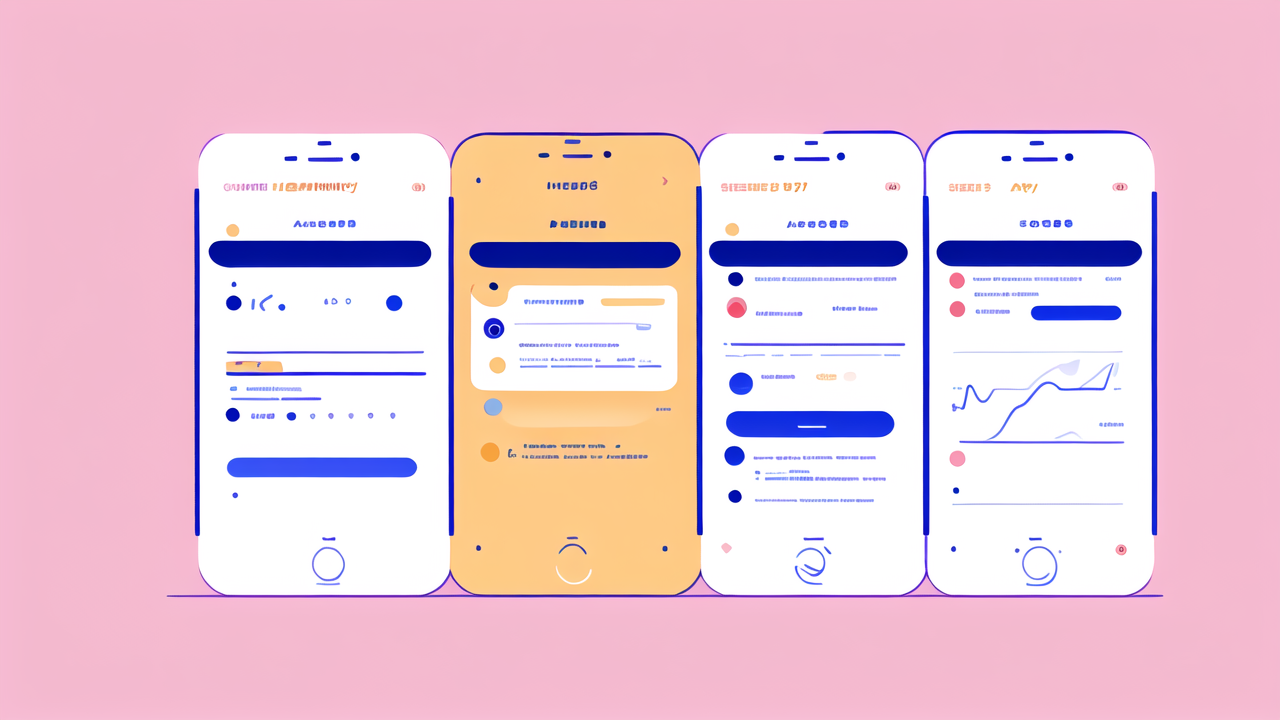The Rise of Smart Bands in the Health and Wellness Sector
The Evolution of Wearable Technology: From Fitness Trackers to Smart Bands
Smart bands have come a long way since their inception. They started as simple step counters. Now, they're advanced health monitors. The first fitness trackers were basic pedometers. They only counted steps and estimated calories burned. Over time, they evolved into more complex devices. Today's smart bands can track a wide range of health metrics. They monitor heart rate, sleep patterns, and even stress levels. This evolution has made them essential tools for health-conscious individuals.

The technology behind smart bands has improved dramatically. Early models used simple accelerometers. Now, they incorporate advanced sensors and algorithms. This allows for more accurate and diverse measurements. The integration of GPS technology was a game-changer. It enabled users to track their outdoor activities with precision. As smart bands became more sophisticated, their popularity grew. They became must-have accessories for fitness enthusiasts and health-minded consumers alike.
Analyzing the Popularity Surge of Smart Bands in the United States
Smart bands have seen a massive surge in popularity in the United States. Several factors contribute to this trend. Firstly, there's a growing awareness of personal health and wellness. People are more interested in tracking their fitness progress. Smart bands offer an easy and convenient way to do this. Secondly, the devices have become more affordable. This has made them accessible to a wider range of consumers.
The COVID-19 pandemic also played a role in boosting smart band sales. With gyms closed, people looked for ways to stay active at home. Smart bands provided motivation and guidance for home workouts. They also offered a way to monitor overall health during a time of heightened health concerns. Social media has further fueled the trend. Users often share their fitness achievements online. This creates a sense of community and encourages others to join in.
The Impact of Smart Bands on Consumer Fitness Behavior
Smart bands have significantly influenced how people approach fitness. They provide real-time feedback on physical activity. This immediate data encourages users to be more active throughout the day. Many smart bands have features that remind users to move if they've been sedentary too long. This helps combat the negative effects of a sedentary lifestyle.
These devices also make it easier for users to set and track fitness goals. Whether it's steps per day or hours of sleep, smart bands help users stay accountable. They provide a sense of achievement when goals are met. This positive reinforcement can be a powerful motivator. Smart bands also offer insights into sleep patterns and quality. This has led many users to prioritize sleep as part of their overall health strategy.
Moreover, smart bands have made fitness more social. Many devices allow users to share their progress with friends. They can participate in challenges and competitions. This social aspect adds fun and motivation to fitness routines. It has helped create communities of like-minded individuals pursuing health goals together.
Key Features of Top-Selling Smart Bands
Advanced Metrics: Heart Rate, Respiration Rate, and More
Top-selling smart bands offer a range of advanced metrics. Heart rate monitoring is a standard feature. It provides valuable insights into cardiovascular health and exercise intensity. Many bands now offer continuous heart rate tracking. This gives users a more complete picture of their heart health throughout the day.

Respiration rate is another important metric offered by advanced smart bands. This measures how many breaths a person takes per minute. It can indicate stress levels and overall health. Some bands can even detect potential sleep apnea. Other advanced metrics include blood oxygen levels, skin temperature, and electrocardiogram (ECG) readings.
These advanced metrics allow users to gain deeper insights into their health. They can identify patterns and potential issues. This information can be shared with healthcare providers for more informed care. As technology advances, we can expect smart bands to offer even more sophisticated health metrics.
Lifestyle Integration: Connectivity and App Ecosystems
Smart bands are not just standalone devices. They're part of larger ecosystems. Most smart bands connect to smartphones via Bluetooth. This allows for seamless data transfer and analysis. The accompanying apps are crucial to the user experience. They present data in easy-to-understand formats. Users can view trends, set goals, and get personalized insights.
Many smart bands integrate with other apps and services. They can connect to popular fitness apps like Strava or MyFitnessPal. This allows users to have a more comprehensive view of their health and fitness. Some smart bands also offer smart home integration. Users can control lights or thermostats with a tap on their wrist.
Notifications are another key feature of smart bands. They can display calls, texts, and app notifications. This keeps users connected without constantly checking their phones. Some bands offer more advanced features like mobile payments or music control. These integrations make smart bands valuable tools for managing daily life, not just fitness.
Battery Life and Design: What Consumers Look For
Battery life is a crucial factor for smart band users. Nobody wants to charge their device every day. Top-selling smart bands often boast battery lives of a week or more. Some can last up to a month on a single charge. The exact battery life depends on usage and features enabled. Longer battery life means users can wear the band continuously. This provides more consistent data tracking.
Design is another important consideration for consumers. Smart bands need to be comfortable for all-day wear. Many users prefer slim, lightweight designs. Water resistance is also a key feature. It allows users to wear the band while swimming or showering. Some bands offer interchangeable straps. This allows users to customize the look to match their style.
Display type and quality vary among smart bands. Some have full-color touchscreens. Others use more basic LED displays. The choice often depends on the user's preferences and needs. A larger, more vibrant display can show more information at a glance. However, it may come at the cost of battery life. The most popular smart bands strike a balance between functionality and design.
Future Trends in Smart Band Technology
Innovations in Sensor Technology and Accuracy
The future of smart bands lies in more advanced and accurate sensors. Current devices already offer impressive capabilities. But there's always room for improvement. One area of focus is non-invasive blood glucose monitoring. This could be a game-changer for diabetics. It would allow for continuous glucose tracking without finger pricks.

Another trend is the development of more sensitive heart rate sensors. These could detect irregular heartbeats more accurately. This could help in early detection of conditions like atrial fibrillation. Some companies are working on sensors that can measure blood pressure. This would add another important health metric to smart bands' capabilities.
Improved accuracy is a constant goal for smart band manufacturers. This involves both better hardware and smarter algorithms. Machine learning plays a big role in interpreting sensor data. As these algorithms improve, smart bands will provide more reliable and detailed health insights.
The Role of AI and Machine Learning in Enhancing User Experience
Artificial Intelligence (AI) and Machine Learning (ML) are revolutionizing smart band technology. These technologies help make sense of the vast amount of data collected. AI can identify patterns and trends that might not be obvious to users. This leads to more personalized insights and recommendations.
Machine learning algorithms can adapt to individual users over time. They learn sleep patterns, exercise habits, and stress triggers. This allows for more accurate predictions and tailored advice. AI can also help in early detection of health issues. It might notice subtle changes in heart rate or sleep patterns that could indicate a problem.
In the future, AI-powered smart bands might act as personal health coaches. They could provide real-time advice on exercise, nutrition, and stress management. The goal is to make smart bands more proactive in helping users improve their health.
Regulatory Challenges and Opportunities in the Wearable Fitness Industry
As smart bands become more advanced, they face increasing regulatory scrutiny. Many of these devices are starting to blur the line between fitness trackers and medical devices. This raises questions about accuracy and reliability. Regulators need to ensure that these devices don't make unfounded health claims.
Data privacy is another major concern. Smart bands collect sensitive health information. There need to be strong safeguards to protect this data. Companies must be transparent about how they use and share user data. Some countries are implementing stricter data protection laws. This will impact how smart band companies operate.
Despite these challenges, there are also opportunities. Regulators recognize the potential of wearable technology in healthcare. Some are working on frameworks to integrate smart band data into medical records. This could lead to more personalized and proactive healthcare. As the industry matures, we can expect clearer guidelines and standards for smart band technology.




Leave a comment
This site is protected by hCaptcha and the hCaptcha Privacy Policy and Terms of Service apply.